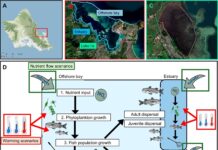A recent satellite image captured the full destructive force of Hurricane Melissa as it slammed into Jamaica on November 17, 2025. The storm, which peaked as a Category 5 hurricane with sustained winds exceeding 185 mph (295 kph), left behind widespread devastation, crippling infrastructure and isolating communities across the island. The image, taken by the European Space Agency’s Copernicus Sentinel-3 satellite, reveals the extreme thermal dynamics at play in these increasingly powerful storms.
The Science Behind the Storm
Hurricanes form over warm ocean waters, drawing energy from heat and moisture. As water temperatures rise due to climate change, hurricanes have more fuel to intensify rapidly. Sentinel-3 captures this process by measuring the stark temperature difference between the warm ocean surface and the frigid cloud tops of the storm. This thermal contrast is a key indicator of a hurricane’s strength and potential for destruction.
The image clearly shows how Melissa’s extreme thermal profile contributed to its rapid intensification. The greater the temperature difference, the more energy the storm can extract from the ocean, driving higher wind speeds and heavier rainfall. Scientists use this data to improve forecasting models and better understand the factors driving these increasingly destructive storms.
The Role of Climate Change
The intensification of hurricanes like Melissa is directly linked to human-driven global warming. Rising ocean temperatures provide the necessary fuel for storms to grow stronger and faster. The data from Sentinel-3 and other satellites confirm this trend: hurricanes are becoming more frequent, more intense, and more destructive.
This isn’t just about warmer waters, either. Climate change also alters atmospheric patterns, creating conditions that favor rapid intensification. The combination of warmer seas and changing winds creates a perfect storm for extreme weather events.
Why Satellite Data Matters
The Copernicus program, run by the European Union and the European Space Agency, uses Sentinel satellites to monitor Earth’s changing climate. Sentinel-3, in particular, plays a crucial role in tracking hurricanes and other extreme weather events. The high-resolution thermal imagery it captures provides invaluable data for scientists, forecasters, and emergency responders.
Without this data, it would be far more difficult to predict the behavior of these storms and prepare for their impacts. Satellite imagery allows us to see the invisible forces at play in hurricanes, helping us to understand how they form, intensify, and evolve.
The Future of Extreme Weather
The image of Hurricane Melissa serves as a stark reminder of the growing threat posed by extreme weather events. As climate change continues to warm the planet, we can expect to see more storms like this in the future. Investing in climate research, improving forecasting models, and reducing greenhouse gas emissions are all essential steps to mitigating the risks.
The data from Sentinel-3 and other satellites is a critical tool in this fight. By understanding the science behind these storms, we can better prepare for their impacts and protect vulnerable communities. The image of Hurricane Melissa isn’t just a snapshot of a single storm; it’s a warning about the future of our planet




































